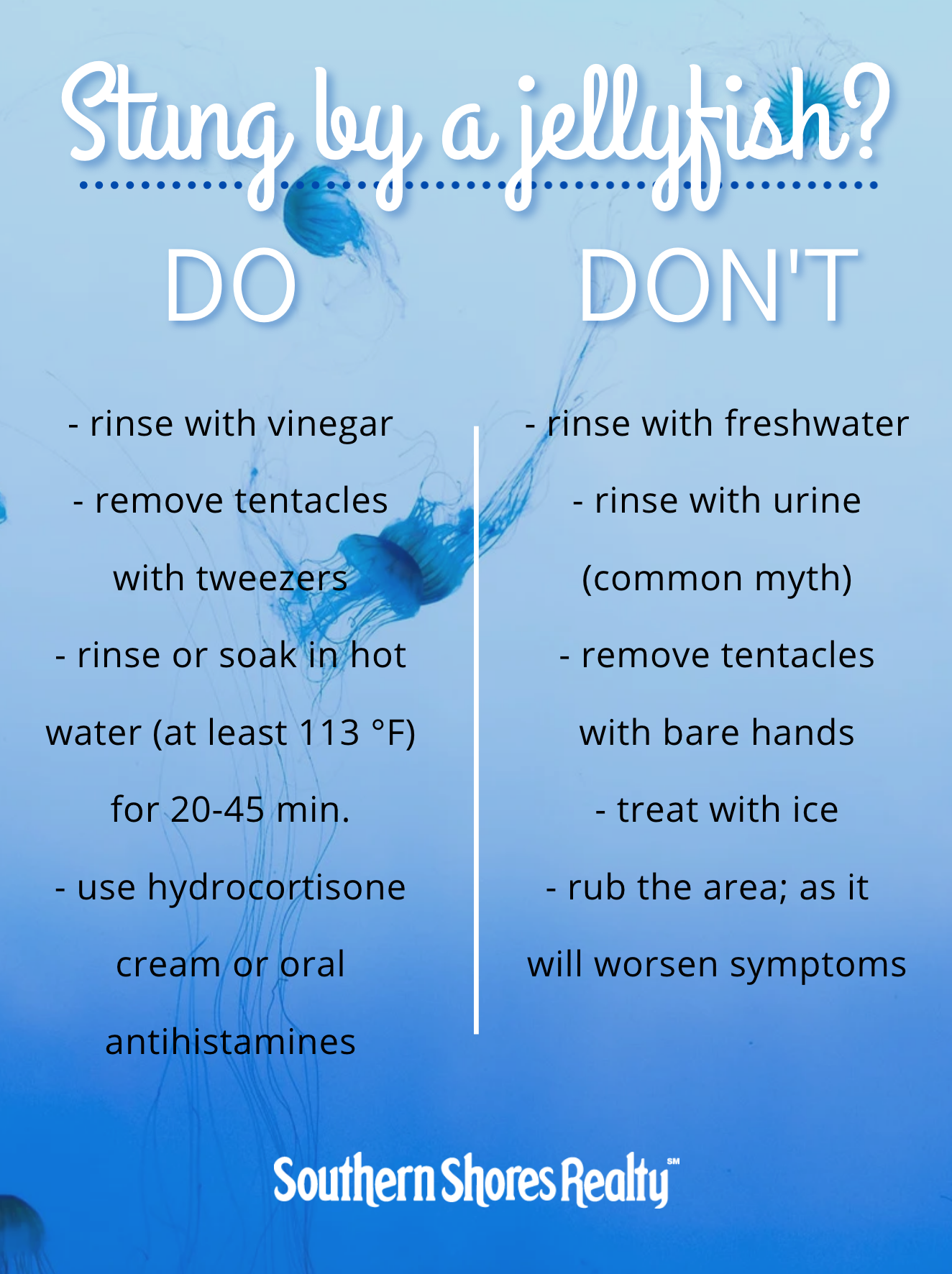Have you ever been walking on the beach and came across silicone looking, jelly-like, crystal clear discs? Have you been swimming and encountered a peculiar brown blob floating by? Maybe you've emerged from the ocean with itchy, slightly stinging skin. All can be linked back to our local jellies. With an abundance of marine life on the Outer Banks, it comes as no surprise that jellyfish like to make a summertime pit stop to our beautiful beaches.
Well before the Outer Banks was a blip on a map, and well before dinosaurs, jellyfish were floating about our oceans. Research shows they've been in existence for approximately 600 millions years or more! This makes them the oldest multi-organ animal in history. Pretty cool!
Having inhabited our seas for millions of years, jellyfish certainly hold a place of importance and integral role in our ecosystem. They are an essential food source for many marine mammals, including precious and endangered sea turtles. For this reason, it is important to remember to never release balloons into the sky, or use helium balloons in areas that are difficult keep secure. Balloons in flight make their way into our seas, where marine life, especially turtles, mistake the plastic as a jellyfish.
In addition to being valuable prey, jellyfish will also, in turn, protect other prey. Smaller fish use jellyfish tentacles as shelter from predators. Their tentacles also provide a defense mechanism for the prey, as their stingers will deliver stinging via neurotoxins to the predator.
As the Outer Banks waters warm and transform into cyan crystal clarity, the more tropical current, the Gulf Stream, dominates the cooler Labrador Current. With that warm, clear water comes some of the more tropical marine life from the south. This shift brings forth more jellyfish from the months (typically) May to September.
Last week (7/20) blooms of jellyfish gave us a visit. The crystal clear water made it easy to observe the jellies from afar, and they speckled our shorelines. This phenomenon raised a lot of questions from beachgoers, so Southern Shores Realty thought it would be beneficial to give the scoop on our local jellies!
Fun Facts:
- A group of jellyfish is called a smack or a "bloom"
- Some glow in the dark
- Jellyfish can essentially clone themselves
- Glow-in-the-dark bioluminescent jellies provided groundbreaking proteins for biotechnological development. They’re pivotal in our understanding of genetics!
- Changes in salinity can drive entire smacks of jellyfish in a new direction. Other factors: temperature, eutrophication, predators, currents, wind direction, and more.
3 Most Common Jellyfish on the OBX:
Moon Jellies. These are the clear, gelatinous discs that wash ashore in the summertime. Take a beach walk in August, and you'll more than likely encounter some of these peculiar beach finds.
The clear disc is not the jellyfish in its entirety. What we typically see washed ashore is the skeleton of the original once living jelly.
These discs do not sting. They are completely harmless and are quite entertaining to hold in your hands.
These jellies, as are most, are very weak swimmers; shifts in in tides, currents, and heavy surf will easily wash entire smacks ashore. That’s why it’s so common to find an abundance of these creatures on our beaches rather than just a single rogue one --though it does happen.
Jellies are low in nutritional value, so their prey must eat a large quantity to gain substantial nutrition. This dubs them one of the snack foods of the sea. Lucky for the turtles, they typically travel in large groups! This makes it easier for the hungry predators to get their fill without expending too much energy.
Sea Nettles: The blooms we saw last week were predominately nettles. If a jellyfish stings you on your OBX vacation, its more than likely by a sea nettle. They are the most common stinging jelly in our region. Don't worry, though, as a serious sting from a local nettle is not common. Many of the stings on the OBX are more of an annoyance than anything --as they're typically just itchy. The intensity of the sting depends on the size of the jelly. Fortunately, the larger jellies are easy to spot and avoid.
Cannonball Jellyfish. Aptly named due to its size and shape closely resembling a cannonball. A sting from one of these is very rare. They have arms around their mouth in which they use to eat and propel themselves through the water. They are also an essential food source for the endangered leatherback sea turtle. While these can be spotted on the Outer Banks, they are not the most common, and are very easy to spot in the water.
Due to the increase in the jellyfish blooms on the Outer Banks, some of the towns have begun flying warning flags for stinging creatures. Purple flags have been employed by the Kill Devil Hills Ocean Rescue to warn beachgoers of dangerous marine life in the area. The prevalence of these creatures is unpredictable, so one should not rely solely on the flying of these flags. At the time of this post, Kill Devil Hills is the only town that has such monikers. Always be alert in the ocean and keep your eye out for any potential threat.
We hope this was informative and helps our beachgoers have a greater understanding and appreciation for our local wildlife.






